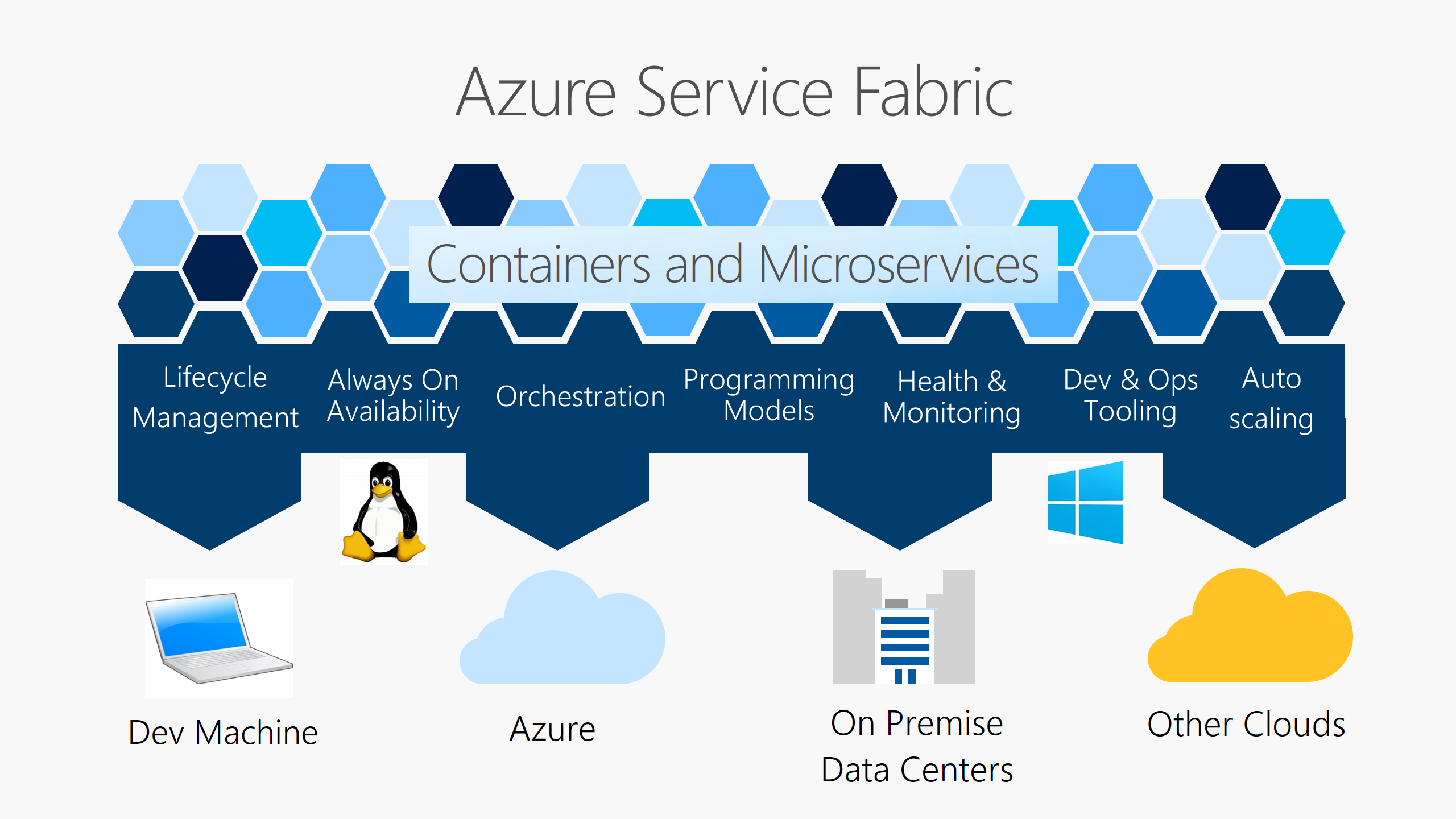Application lifecycle management with Azure Service Fabric
Packaging, deployment, and management of accessible and reliable Microservices and containers have become easier than ever before with Azure Service Fabric, a scattered systems platform. What is more, it also displays substantial difficulties in developing and handling cloud native applications. Like other platforms, an application on Azure Service Fabric usually drives over a lot of stages. They are: design, development, testing, deployment, advancement, upkeep, and elimination. Azure Service Fabric is responsible for outstanding provision for the full application lifecycle of cloud applications. From development to deployment, every day supervision and looking after to subsequent taking out, everything is taken care of. The service model allows a number of diverse parts to chip in individually in the application lifecycle. Through this write-up let us try and get a general idea of the APIs and in what way they are used by the diverse parts during the course of the stages of the Service Fabric application lifecycle.
Key differentiators for Azure Service Fabric
The most important thing about service fabric is that it runs on any cloud and any platform. Clusters for service fabric in a lot of environments can be created, say for example, Linux, Windows, and Azure or on premises. With the help of service fabric explorer, the state of the applications and the nodes on which they are running can be envisaged. Service fabric definitely provides the condition of the nodes along with the view of applications running on each node. It alarms about the situation beforehand giving insights by showing any faults/cautions on the applications. Additional services are provided by Azure service fabric explorer making things easier during the course of the software development. It allows you to create applications consisting of Microservices or containers.
Application Lifecycle Management General Idea for Windows Azure
Developing in Windows Azure is at the same time not that much diverse from what you know, surrounded by on-premises systems, and diverse in important methods. And as these differences occur, for this very reason software architects frequently request about the particular procedure to develop and set up a Windows Azure application, which is normally known as an Application Lifecycle Management or ALM too.
In this internet age, a lot of resources are there, which can be used to know and pick up more about a number of portions of ALM. A lot of definitions are there for application lifecycle management, from the control of code injection, domain promotion, testing, and process flow and so on. A lot of software architects are concerned for the finer-grained info. They are more or less interested in development and deployment of an application. The tools they need for the development and deployment and by what means the running code can be obtained which can be used for testing purposes. To understand it clearly, let us understand the primary development to get a clear image to proceed further.
Some light on Primary development in context with application lifecycle management
First and foremost, the code is written. And the code can be written in a number of ways, mostly there are three ways. This can be done in a separate (non-connected) setting like your laptop. On the other hand, the easiest and commonest way to create an Azure application is by using visual studio. This is because as it lets you to combine the Azure components you want to leverage along with the on-premises code you require today or are making. Once the installation and patching up of Visual Studio is done, you need to download and install the Windows Azure Software Development Set. After the proper installation, you will get all the API’s that you might require along with the completely functional native setting to run and test your code before you set up it. What is more, a lot of samples will also be obtained after the set up. From the samples, they can be downloaded as and when they are needed. The second way by which the code can be written is through eclipse. It can also be used to develop for Windows Azure. On the other hand, the complete runtime setting in just that set single-handedly cannot be obtained, nonetheless you can use this productively on a Linux system. A lot of software developer’s use this method in which also contain the required downloads and documentation. Lastly, Rest API’s can be used to hit Azure Assets and regulate them. This is not the favoured way, but this is very much possible.
Setting up to a test case
As soon as the code gets developed the need to test the code arises. Azure emulator comes into play which is present there on the development laptop. But it is for a solo handler on that laptop, and it also has some delicate alterations from the assembly fabric as you might visualize. In general, a small contribution to run and test the application is used and set up; just similar to what you would have a set of test servers. One thing is there that every contribution would have its specific management keys and certificates. This is there to contribute to identify and keep the testing setting separate for separate tasks. It goes out that though Application Lifecycle management offers benefits but not every single profit of ALM is essential to one and all. In other words, diverse kinds of firms benefit inversely from ALM.
Setting up to production and handling code modification
As soon as the code gets developed and is tested thoroughly, then moving the code to a place arises wherein all the users can access it. One thing which is clear is that there is not much physical transformation in the kind of technologies, fabric or any other constituent in production windows Azure accounts and for that matter the test accounts too. On the other hand, time and again minor systems to set up for testing are picked up to make things easier and simpler. In the production Windows Azure account, the team usually restricts the right of entry to the account for setting out to a distinct set of software architects. This guarantees code movement and control. Also, the current users are able to access the application or data the manner in which you want them to use it. With the application set up, there are dual comprehensive jobs you want to think through. One is handling modifications through the application, and the other consists of management, monitoring and performance tweaking for an application. Swiftly and simply build, test, fix, set up, and upgrade Service Fabric applications in single-box, test, and production settings.
Conclusion
As we have seen here that resource manager templates are there already to get in full swing with Azure API Management and Service Fabric, together, in Azure. Front-end gateway is normally needed for all the cloud applications. This is so as to make available a sole point of doorway for everyone – handlers, devices, or other applications. In Service Fabric set up, an access can be any stateless service. It is recommended to use it without any difficulty by keeping the info updated. In the present day, lot of firm’s understand the benefits of this method. Azure Service Fabric is certainly one of the most influential tools to decrease the difficulties of such settings and meet the wants of a lot of industries, such as: manufacturing – Gaming, IoT financial services, or any application that profits of extra scalability and resiliency. Emphasize on constructing applications and business rationality, and allow Azure to resolve the firm distributed systems difficulties for example reliability, scalability, management, and latency. It is all about using a proven platform for task-critical applications. A decent ALM resolution benefits develop combined clear, established relations between Business and IT department. Select it wisely!





